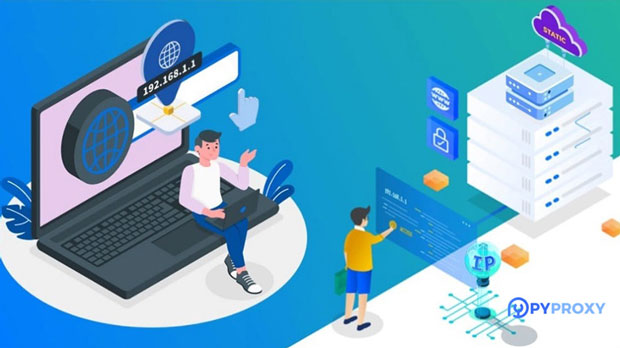Speed difference between HTTP proxy and SOCKS5 proxy, which is better for high traffic applications?
When choosing between HTTP proxies and socks5 proxies for high-traffic applications, understanding their respective strengths and limitations is crucial. The key difference between the two lies in their protocols and the way they handle data transmission. HTTP proxies work specifically with HTTP/HTTPS traffic, whereas SOCKS5 proxies are more versatile and can handle various types of internet traffic, including HTTP, FTP, and even peer-to-peer (P2P) applications. This flexibility makes SOCKS5 proxies more efficient for handling large volumes of traffic. In contrast, HTTP proxies may encounter bottlenecks when processing large-scale data due to their limited functionality. This article explores the differences in speed, performance, and suitability for high-traffic applications to help determine the best choice for your needs. 1. What is HTTP Proxy?An HTTP proxy is a server that acts as an intermediary between a user and the internet for HTTP/HTTPS traffic. It works by receiving HTTP requests from a client, forwarding them to the target server, and then returning the response back to the client. HTTP proxies are commonly used for tasks like web browsing, content filtering, and accessing geo-restricted content. However, they are not as versatile as SOCKS5 proxies since they only support web traffic.2. What is socks5 proxy?SOCKS5 is a more advanced version of the SOCKS protocol and is capable of handling any type of internet traffic, not just HTTP/HTTPS. This includes FTP, P2P applications, and even VOIP (Voice over IP) traffic. Unlike HTTP proxies, SOCKS5 proxies don’t inspect or alter the content of the traffic passing through them, making them a more generic solution for various types of internet connections. They are also less likely to be affected by issues such as connection throttling or packet filtering, which can impact HTTP proxies.3. Speed Differences: HTTP Proxy vs SOCKS5 ProxyThe speed of a proxy service can be affected by several factors, including the type of traffic, the network infrastructure, and the protocol used. Let's break down the speed differences between HTTP and SOCKS5 proxies based on the type of traffic they handle and their overall performance in high-traffic environments.3.1. HTTP Proxy SpeedWhile HTTP proxies are optimized for web traffic, they often suffer from slower performance when dealing with high volumes of data. This is due to several reasons:- Protocol Overhead: HTTP proxies add extra overhead because they inspect and sometimes modify the HTTP headers. For example, they may perform encryption, content filtering, or caching, which increases latency.- Limited Traffic Types: HTTP proxies only handle HTTP and HTTPS traffic, meaning they cannot process non-web traffic (e.g., FTP or P2P). In a high-traffic scenario where different types of data need to be transmitted, this limitation can lead to congestion and delays.- Connection Bottlenecks: Since HTTP proxies are designed specifically for web browsing, they may not be able to handle a large number of simultaneous requests, leading to slowdowns or packet loss when under heavy load.3.2. SOCKS5 Proxy SpeedSOCKS5 proxies are typically faster than HTTP proxies for high-traffic applications, and here’s why:- Low Overhead: SOCKS5 proxies do not modify the data in transit. They simply forward the packets between the client and the server without inspecting the content. This reduces overhead and improves throughput.- Multi-Protocol Support: SOCKS5 can handle a wide variety of traffic types, making it more efficient for applications that need to send large volumes of data across different protocols (e.g., FTP, P2P). It can also support UDP traffic, which is often used for real-time applications like gaming and video streaming, where low latency is crucial.- Better Scalability: SOCKS5 proxies tend to perform better under heavy loads because they are not restricted to just web traffic. The protocol can scale more efficiently to handle multiple types of requests simultaneously, which is especially important in high-traffic environments like data centers, large-scale content delivery, or distributed applications.4. Suitability for High-Traffic ApplicationsWhen dealing with high-traffic applications, such as streaming services, file sharing, or large-scale data transfers, the efficiency and versatility of the proxy protocol become critical. Here’s a detailed look at the suitability of both HTTP and SOCKS5 proxies for these types of applications.4.1. HTTP Proxies for High-Traffic ApplicationsWhile HTTP proxies can be used for high-traffic applications, they are typically not the most suitable option for the following reasons:- Limited Protocol Support: HTTP proxies are confined to handling HTTP and HTTPS traffic. High-traffic applications that require FTP, P2P, or other types of connections may encounter issues with HTTP proxies.- Latency and Bottlenecks: As mentioned earlier, HTTP proxies tend to add latency due to protocol overhead and content inspection. This can create delays in environments where real-time communication or low-latency data transfers are essential.- Scalability Issues: HTTP proxies may struggle to scale when large amounts of data need to be processed concurrently. For instance, in large-scale file-sharing applications or video streaming, HTTP proxies might not perform efficiently due to the strain on the server.4.2. SOCKS5 Proxies for High-Traffic ApplicationsSOCKS5 proxies are more suitable for high-traffic applications due to their superior performance in various scenarios:- Versatility: SOCKS5 proxies are capable of handling a variety of protocols, including HTTP, FTP, P2P, and UDP, making them ideal for applications that require different types of traffic.- Higher Throughput: Due to the reduced overhead and the ability to handle multiple types of traffic, SOCKS5 proxies generally provide higher throughput and are less likely to experience performance degradation when handling large volumes of data.- Better Support for Real-Time Applications: For applications like gaming, video conferencing, and VoIP, SOCKS5 proxies are better equipped to minimize latency and maintain a smooth experience, thanks to their support for UDP and low overhead.5. Security ConsiderationsWhile speed and traffic handling are critical factors, security is also an important consideration when selecting a proxy for high-traffic applications.5.1. HTTP Proxy SecurityHTTP proxies often provide basic security features, such as content filtering and the ability to hide the client’s IP address. However, because HTTP proxies handle only web traffic, they may not be sufficient for applications requiring more comprehensive security measures, especially when dealing with sensitive data or multiple types of traffic.5.2. SOCKS5 Proxy SecuritySOCKS5 proxies offer a more robust level of security compared to HTTP proxies. They can support authentication methods, including username and password, which provides an additional layer of security. Additionally, SOCKS5 can handle various types of traffic securely, making it a better choice for applications that involve file transfers or P2P connections where encryption and privacy are essential.6. ConclusionIn conclusion, for high-traffic applications, SOCKS5 proxies generally outperform HTTP proxies in terms of speed, versatility, and scalability. The reduced overhead, support for multiple protocols, and ability to handle large volumes of diverse traffic make SOCKS5 a more suitable choice for scenarios like real-time applications, data transfers, and content delivery. While HTTP proxies can still be useful for basic web browsing tasks, they are not as efficient when handling high volumes of data or diverse traffic types. Therefore, for applications requiring high-speed data transfer and low latency, SOCKS5 proxies are typically the preferred option.
2025-01-03

























































